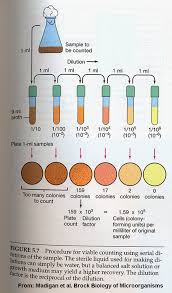Water-borne diseases are caused by many pathogenic bacteria, viruses, protozoa etc. Among the bacterial infections that are spread by water are cholera, enteric fevers, dysentery. Among the viruses, Hepatitis A, poliovirus cause infections after drinking contaminated water. Among the protozoa Amoebic dysentery caused by the protozoan Entamoeba histolytica and those caused by Giardia lamblia, Balantidium coli and Cryptosporidium species which is spread either by drinking contaminated water or by eating food such as fresh fruit, salad or raw vegetables that have been washed in contaminated water. Among the helminthes are Schistosomiasis caused by worms of the genus Schistosoma.
Since it is impossible to test for every pathogenic microorganism, we test for the presence of indicators to decide the potability of drinking water.
WHO standards say that
1) potable (drinking) water should have no fecal coliform per 100 ml
2) potable (drinking) water should have no more than 4 coliforms per 100 ml.
If more than these are observed, appropriate treatment method should be undertaken.
General Rules of Sampling
1) Wash your hands thoroughly before and after collecting samples.
2) Collect microbiological samples in sterile bottles.
3) Take care to avoid contaminating the sample container and water sample.
4) Label the bottle before sampling.
5) Take a minimum of three samples of each and from different areas of water body.
6) Perform the analysis immediately and if any delay is there, store the samples at 4 degree C.
Water Analysis
In short, the different methods of water analysis are
(1) General Methods
1. Total Count/ Heterotrophic Plate Count (HPC)/Colony Count/Plate count
2. Membrane Filter Method
(2) Specific Methods
1. Coliforms
1. MPN
2. Colilert defined substrate test
3. Differential Coliform Test
4. IMViC
2. Fecal Streptococci
1. Azide-dextrose/ Glucose azide broth
3. Clostridium perfringens
1. Litmus Milk Test
4. Pathogenic bacteria
Specific Methods, if need arises
General Methods:
1. Total Count/Heterotrophic Plate Count/Colony Count/SPC-Simple/Standard Plate Count
Small volume of diluted sample pipetted on to surface of the plate and pour plate performed. Incubation at 20-22oC for 3 days (bacteria/fungi-(saprophytes which arepresent in environmental samples) and/or 37oC for 24 h (potential pathogens). Count the plate with dilutions which give between 30 - 300 colonies.
Used for general purposes like:
Idea about heterotrophic bacterial content of water
Test the efficiency of water treatment processes
(Pour plate - 1 ml of appropriately diluted inoculum is added to 15 ml of molten agar and poured on petridish. After incubation, Colonies appear throughout the depth of medium. Used to estimate viable count.)
2. Membrane Filter Method
The membrane filtration method is a direct method of determining the presence and numbers of bacteria. It makes use of a filtration apparatus which separates bacteria from the water. The bacteria collected on the surface of a removable membrane filter are placed on an appropriate medium and incubated. Colonies have a distinctive appearance and are counted. This method is suitable for low-turbidity waters that do not clog the filter and have relatively few bacteria that would interfere with the results.
The membrane filter technique involves filtering a known volume (100 ml for drinking water samples) of water through a special sterile filter. These filters are made of nitrocellulose acetate or polycarbonate and have 0.45 µm diameter pores. A grid pattern is typically printed on these filter disks to facilitate colony counting. When the water sample is filtered, bacteria (larger than 0.45 µm) in the sample are trapped on the surface of the filter. The filter is then carefully removed, placed on a sterile petri plate (on a pad saturated with a liquid or agar-based medium,) containing appropriate medium and incubated for 24 hours at 35-37°C.
Each bacterium trapped on the filter will grow into a separate colony. By counting the colonies one can directly determine the number of bacteria in the water sample that was filtered.
Advantages
Simple method
shorter time needed to complete the test (1 day vs. 3 to 4 days in MPN)
direct test; not statistical - higher accuracy in counting
Disadvantages
Particulate samples (containing silt or other organic matter) quickly clog the filter
Metals and phenols can stick to the filter inhibiting growth of microrganisms (filtration concentrates them on the filter)
Membrane filters are costly
Membrane filters are reusable only to a minimum number of timesC
Specific Coliform Count: Using specific media - EMB/Endo agar for coliforms









No comments:
Post a Comment